Slavery is not the first thing most people wish to think about when spending time in a hot Caribbean island, but you – rightly – cannot visit Barbados without its history permeating its present. You see it in the beautiful rippling fields of sugar cane; a crop that made British colonists fantastically rich throughout the 17th and 18th centuries: fields worked by enslaved people. You see it in the former 800 plantation houses around the island, some of them still in a pristine state. You see it in the remains of windmills, once used to produce sugar.
In 2021, Barbados became a republic; a ceremony attended by, among others, the country’s most famous citizen, the billionaire Rihanna. (So beloved is Rihanna that the modest street where she grew up, Westbury Road near Bridgetown, has been renamed Rihanna Drive.) It was the latest and most significant development in the history of an island determined to take full ownership over both its past and present.
And the present Barbados, a relatively tiny place of just 34km by 23km, is pretty thrilling to experience. For a country so small, it has an extraordinary diversity both of landscape and climate. The sheltered western Caribbean Sea side is one long beach, populated by hotels, resorts and villas. I’d heard of one: the famous Sandy Lane, which is co-owned by Dermot Desmond, JP McManus and others. (We did not stay in Sandy Lane, where rooms start at $1,100 (€1,044)* a night.)
The eastern Atlantic Ocean side is where the winds blow, there’s a culture of surfing, new eco hotels and lodges, such as the very beautiful Eco Lifestyle Lodge, and where there is an entirely different atmosphere. The beaches are rocky, and with strong currents unsuitable for swimming. You won’t find any beach parasols here, but the views and landscape are phenomenal, and much of the coastline is free from development.
READ MORE
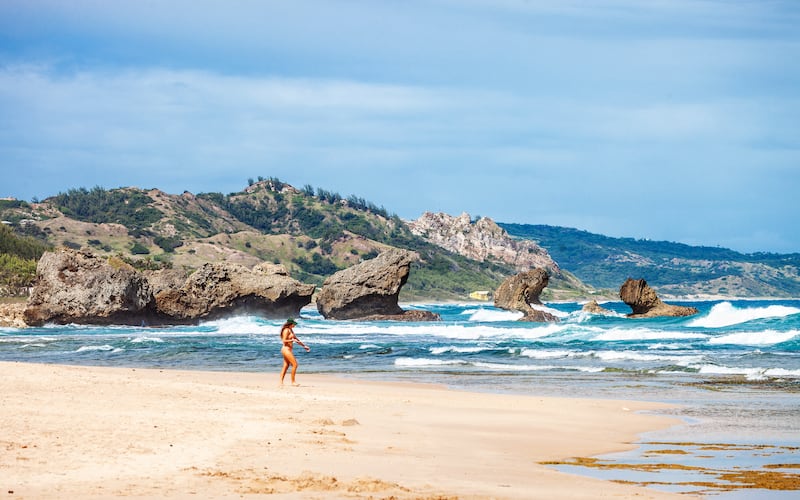
This eastern side is quieter and wilder, and gorgeous in a totally different way to the white beaches of the west. This is also where local people from all over the country go at weekends to eat, drink, hang out, watch the sunset and generally chill out. This down-time activity is known as “liming”; a joyful expression I’d never heard before. “Lime Like a Boss” read the declarations painted on walls all over the island.
The interior of Barbados, a vertical, steamy, humid jungle, is a different place again, where every second tree is mahogany, breadfruit (which, when cooked, tastes like potato), pomegranate and mango. “Forest bathing” walks are on offer at Coco Hill Forest, where sustainability is the ethos. Some 90 per cent of native plants were cleared to grow sugar cane in the past, and there are now efforts being made here to plant coconut trees, supplemented with banana trees and mango trees.
In the interior also is the opportunity to visit Hunte’s Gardens; a vast sunken garden filled with orchids, birds of paradise and a myriad of huge tropical flowers. Visitors are usually met by the talkative owner, Anthony Hunte, who offers glasses of extremely strong cold rum punch at the end of each visit.
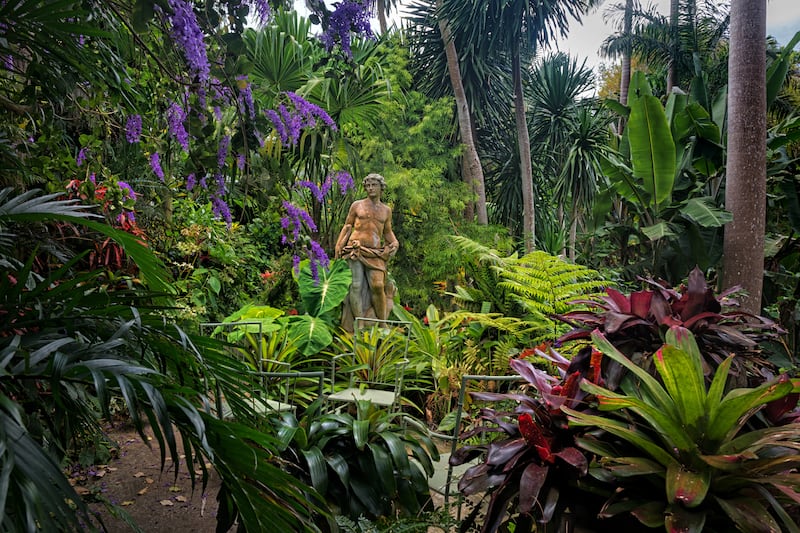
It’s these two locations, the jungly interior and the wilder, more austere eastern side of the island that are the focus of new developments in tourism for Barbados, in an effort to draw people away from the resorts along the western beaches. Just before our visit, the season finale of Succession had aired. The beach the Roy siblings walk along while visiting their mother’s villa in Barbados, which has huge round rocks in a line stretching into the ocean like a string of beads meant for a giant, is at Bathsheba, and visible for miles.
Like many who obsessed over Succession, I had trawled through the show’s list of locations. It turns out that the house that stands in for Caroline Roy’s villa is on the island’s west side: a gorgeous Italianate mansion. I did not think when I watched the final episode at home in Dublin that a fortnight later I would be swimming from a catamaran in clear turquoise water to get a closer look at this house. (You are not permitted to land on private property, but we did swim right up to the beach outside Maddox House, now available to rent.)
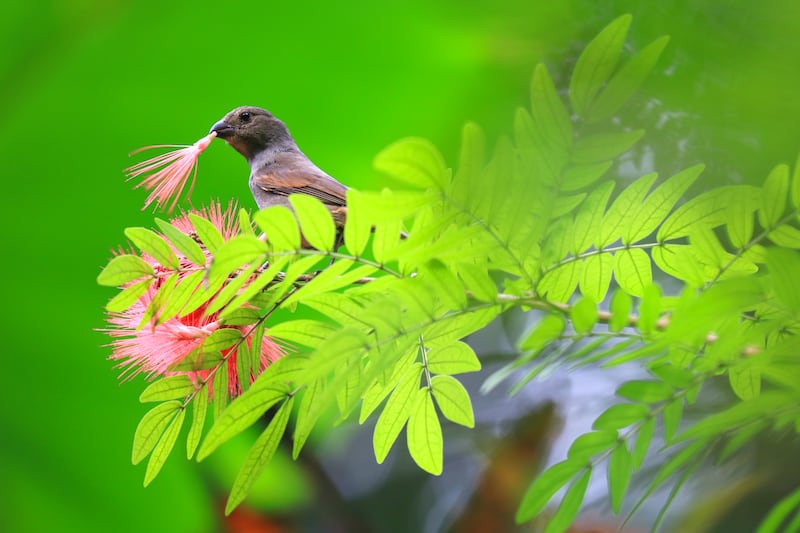
Barbados is a small island that imports much of its food and goods, which contributes to a high cost of living. At one point when we were travelling around, our driver pointed out the many unpainted facades of the wooden houses, explaining that imported paint cost so much per litre that many people chose to leave them unpainted. However, while foodstuffs and goods are expensive, both healthcare and education is free, including university.
Unlike many countries in the tropics, the water in Barbados is safe to drink, which also has the benefit of sparing the environment umpteen numbers of empty plastic bottles. I drank tap water most of the time I was there.
It is a fact, however, that many tourists prefer not to drink the local tap water, even when told it’s safe. And so the ingenious people at Eco Sky Water have come up with a sustainable alternative. In additional to collecting rainwater, they extract water from the air, and bottle it in either wholly compostable plant-based bottles or in glass bottles. The compostable bottles can be stuck into the ground and break down swiftly. The glass bottles are supplied to local hotels and restaurants, and with each delivery, the empties are returned and reused.
The beaches are public in Barbados, and sunset rituals are definitely not just for tourists. Every sunset, people gather at the beaches to have a cold Banks beer and/or a fish “cutter” – an addictively delicious fried fresh fish sandwich, sold at many stalls countrywide. Pebbles Beach at Carlisle Bay near Bridgetown is famous for its sunsets and fish cutters – and even more famous for its sunrises.
One of the most glorious, joyful, beautiful – and free – things to do in Barbados happens every morning soon after sunrise at Pebbles Beach. Racehorses from the nearby Garrison Savannah racing stables come down to the beach with their handlers for exercise, before the heat of the day begins. Scores of them. They roll around on the sand like equine dogs, and then go into the beautiful Caribbean water, and swim. Anyone can go there and watch, as I did early one morning.
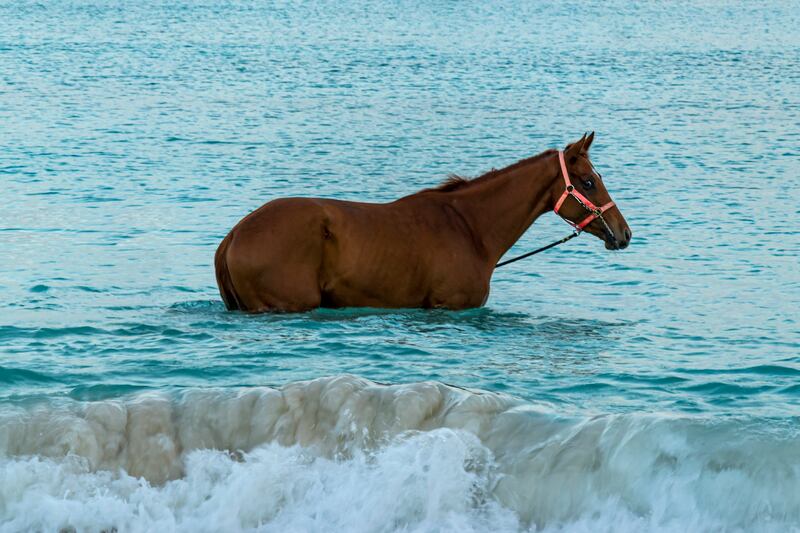
Whether staying on the west coast or the east coast, one thing everyone should do on a trip to Barbados is to go to the south of the island on Friday evenings, to the seaside town of Oistins for the weekly Fish Fry. Every Friday there is like a cross between a seafood festival, “liming”, and an ad hoc dance hall, and it is always packed with locals.
There are scores of open-air stalls from where the freshest of seafood and shellfish sizzle to order. You eat at plastic chairs, squeezing into tables where you can, and then go dancing. There’s a stage with an ear-splitting DJ one end of the market, and a space at the other where beautifully-dressed couples of all ages expertly dance waltzes and complex ballroom all night to live music. The whole fabulous experience is an authentic cultural heritage gem, and surely worthy of Unesco designation.
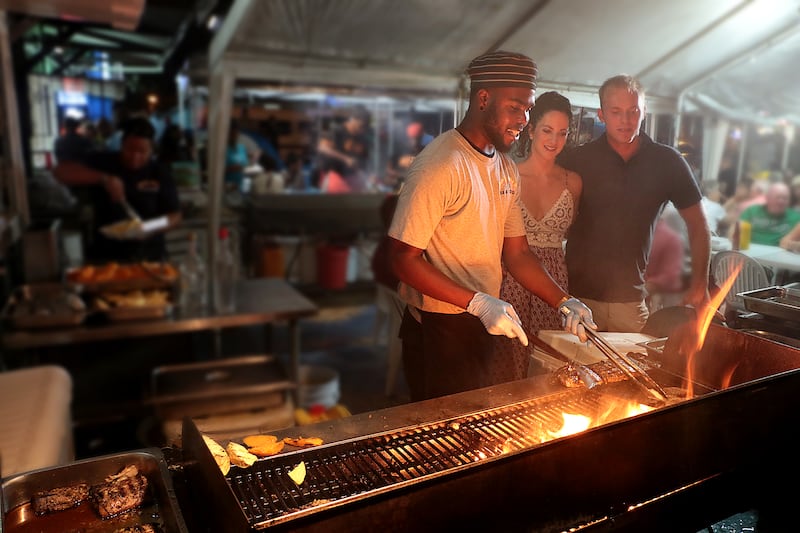
Rosita Boland was a guest of Barbados Tourism Marketing Inc; visitbarbados.org
*This article was amended on October 16th to correct a currency conversion error


















